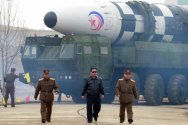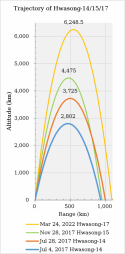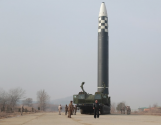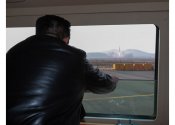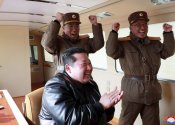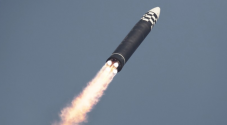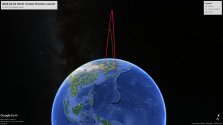
They simulated the full ICBM range by making it go pretty much straight up. It reached crazy altitude, coasting up to apogee of 4,475km, ten times higher than ISS. If fired in a more horizontal conventional ICBM trajectory it would be very much be intercontinental, able to hit pretty much any city in the US from North Korea.
I rather doubt North Korea has MIRV technology, likewise they are unlikely to have thermonuclear weapons. So this monster of an ICBM is likely designed to loft a single supersized (maybe boosted) fission bomb to threaten cities.

